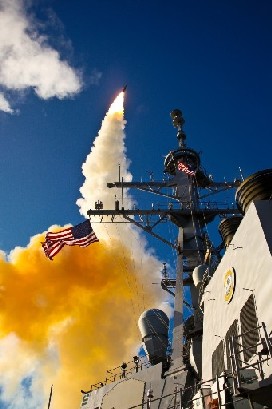The US will test its core missile defenses for the first time in January against a simulated long-range Iranian attack, a top Pentagon Official said, amid tensions with Tehran.
Speaking at the Reuters Aerospace and Defense Summit in Washington, Army Lieutenant General Patrick O'Reilly, the Head of the Missile Defense Agency, said the roughly $150 million test was a departure from the more standard scenario of a North Korean attack.
It also would be more difficult testing the US Ground-based Midcourse Defense (GMD) system against a missile that would be faster and more direct as it races toward the United States than a simulated strike from North Korea.
'Previously, we have been testing the GMD system against a North Korean-type scenario,' O'Reilly said.
'This next test ... is more of a head-on shot like you would use defending against an Iranian shot into the United States. So that's the first time that we're now testing in a different scenario.'
His comments came the same day that diplomats disclosed concerns among intelligence agencies that Iran tested a key atomic bomb component as recently as 2007. The finding, if proven true, would clash with Iran's assertion that its nuclear work is for civilian use.
The test would fire an interceptor missile from Vandenberg Air Force Base in California at a simulated incoming missile, launched from the Marshall Islands in the Pacific Ocean. An aide to O'Reilly estimated the cost at about $150 million.
Experts compare the simulation to a bullet hitting another bullet in space. O'Reilly said the goal was to destroy the target over the north central Pacific when the missiles had a combined closing speed of more than 17,000 miles per hour (27,000 kph).






















